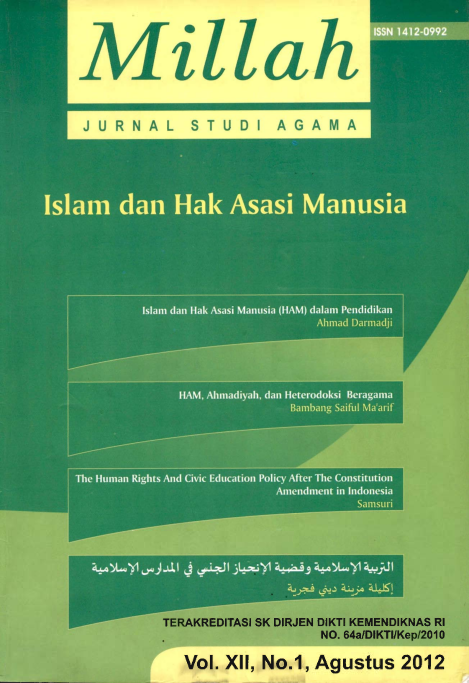Main Article Content
Abstract
Step Real Counteract Communist Movement that contrast to Human Right through Education: A Critique Ideology. This discussion describes the emancipatory critical social theory of Jurgen Habermas anti-thesis to the ideology of Marxist-Leninist-Maoist-Communist Party. It Explained that the concept of rationalization of community development; emancipatory form of social interaction, has proceeded in a fear and balanced. Include: the rationalization of technical/job dimensions, rationalization of practice/dimensions of interaction or communication, and rationalization of the system/power dimension. By this, they can expand the technical mastery of the external world, capable of conditioning the situation of human communication that is free as well, and may set technical goals and practice themselves perfectly. This is the development of community/human to fit his (human), without getting stuck in ideology. While the Marxist-Leninist-Maoist-Communist Party, stuck into a one-sided rationalization, i.e. technical/instrumental action, so that people/humans evolved in shades of rational action aims/production (reification of self; mechanical, linear, scientific, and indoctrination (ideological), because there is no interaction and communication. His idea can be implemented through his educational concept. First, human beings should lead to the achievement of human beings capable of managing the world with shades of deep understanding (hermeneutics and Verstehen) the reality of his next life, as well as in dialogical relations system; equivalent, communicative, and egalitarian. Second, it must be supported by a curriculum that be able to nurture the potential of cognitive interests: technical, practice and emancipatory. Third, it must be realized by the method of learning with the theoretical and practical model.
Article Details
Authors retain copyright and grant the journal right of first publication with the work simultaneously licensed under a Creative Commons Attribution (CC-BY-SA) 4.0 License that allows others to share the work with an acknowledgment of the work’s authorship and initial publication in this journal.




